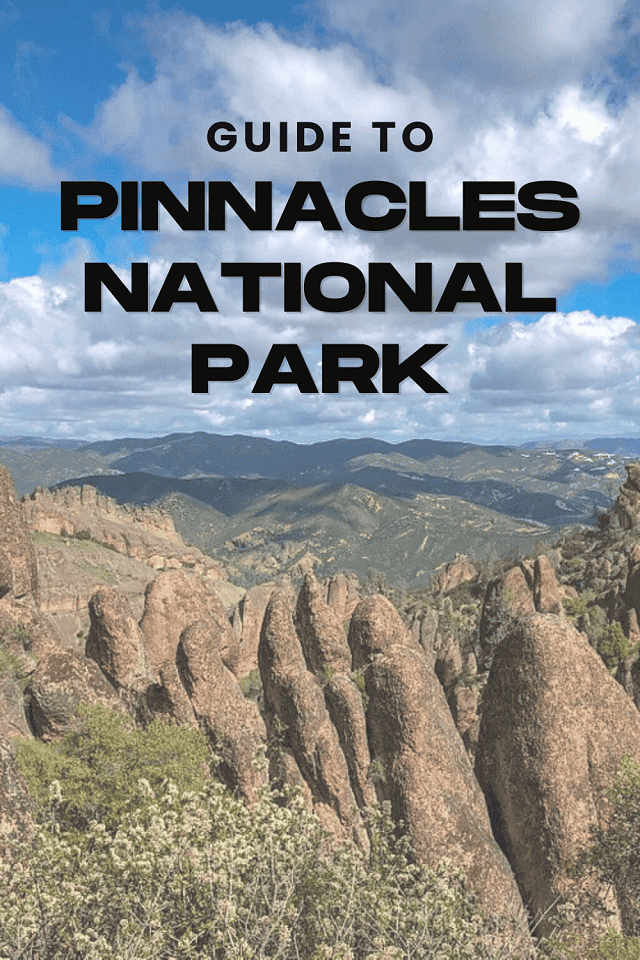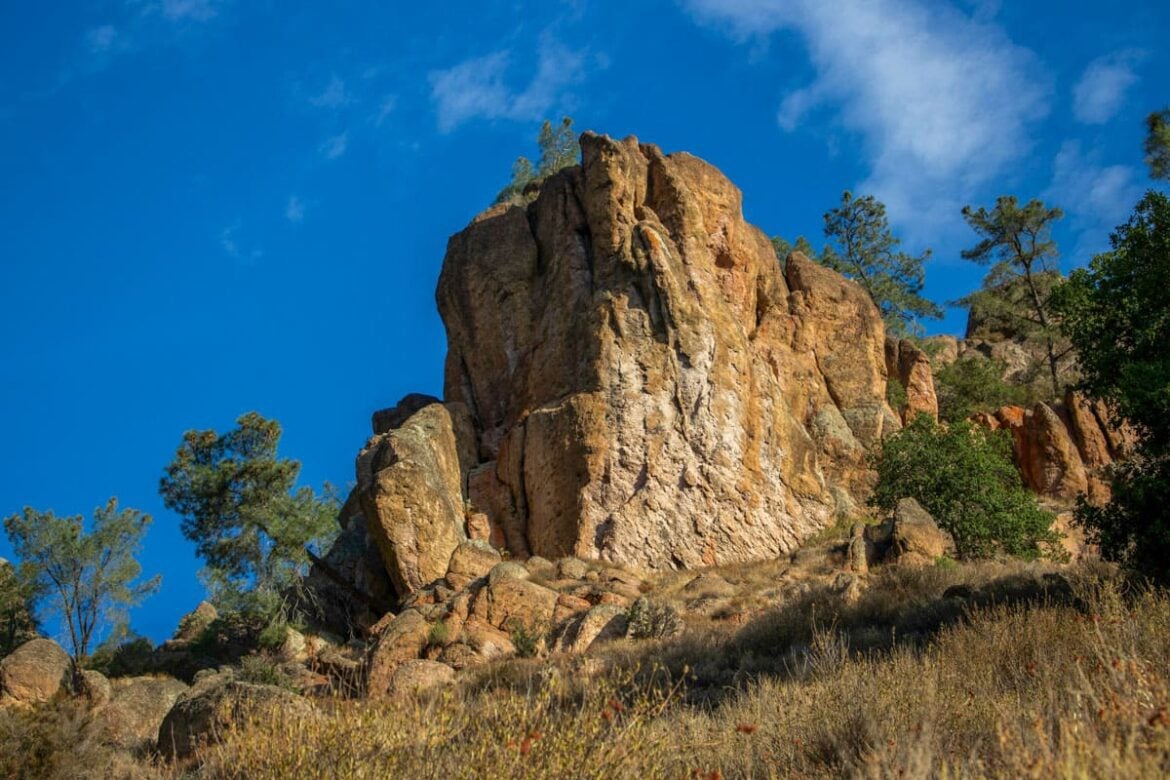Looking for a complete guide to Pinnacles National Park? I’ve spent the last year exploring every trail, cave, and climbing spot in this volcanic playground, and I can tell you – it’s the most underrated park in California. Just 2.5 hours from San Francisco, you can watch endangered condors soar overhead, scramble through bat caves, and climb some of California’s most unique routes.
This guide covers everything I wish I’d known before my first visit. We’ll get into the best trails and caves, how to spot those massive condors, and crucial tips like which entrance to use (they don’t connect by road). If you’re coming for a day hike or a weekend of climbing, I’ll help you time your visit right and avoid the rookie mistakes I made. Trust me, this park is about to become one of your favorite places to visit in California! Here’s my complete guide to massive condors, mysterious caves, and stunning peaks just hours from San Francisco!
Pinnacles National Park Guide: Quick Tips
I’ve had so many incredible moments in Pinnacles that it’s hard to pick favorites, but these spots are guaranteed to make your first visit amazing. Here are the experiences that’ll show you why this park is so special:
- Best sunrise spot: High Peaks Trail overlooking the fog-filled valley
- Coolest geological feature: Bear Gulch Cave’s boulder maze
- Most likely condor sighting: Scout Peak during mid-morning thermals
- Most refreshing summer spot: The pools along Moses Spring Trail
- Best unexpected view: Balconies Cave overlook at sunset
- Most peaceful moment: Early morning at the Bear Gulch Reservoir
I can’t wait to share all the details about these spots with you. Pinnacles is one of my favorite hidden gems in California – let’s explore it together!
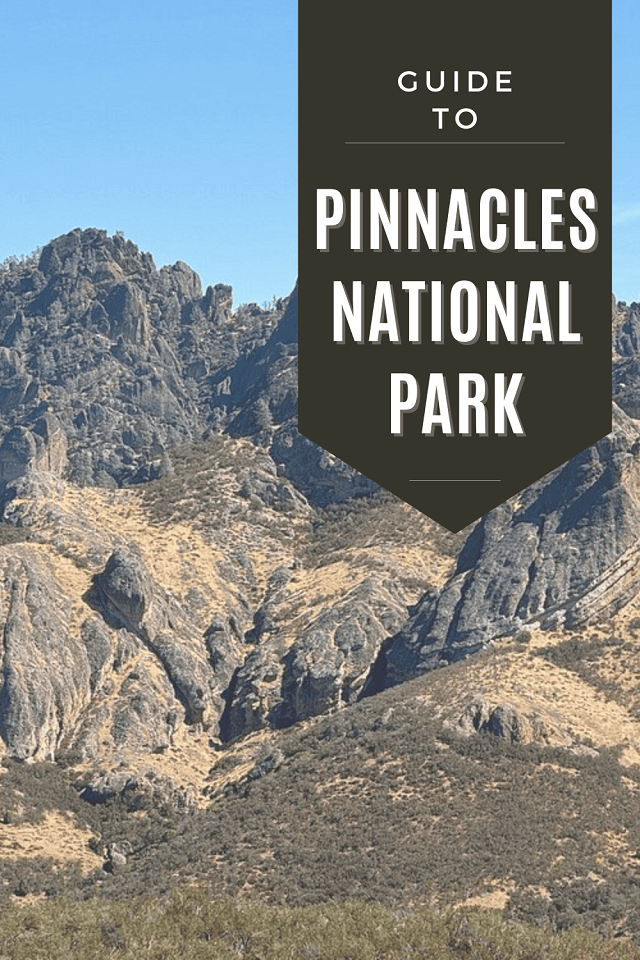
How to Get to Pinnacles National Park
Here’s the most important thing about visiting Pinnacles: there are two entrances, and they don’t connect by road. Choose wisely or you’ll end up with an unexpected 1.5-hour detour!
East Entrance (5000 Highway 146, Paicines)
This is your best bet for a first visit. You’ll find the main visitor center, campground, and Bear Gulch Cave access all on this side. Driving times:
- San Francisco: 2.5 hours via US-101 S
- San Jose: 2 hours via US-101 S
- Monterey: 1.5 hours via CA-146 (most scenic route)
Fill up gas in Hollister – it’s your last chance. Aim to arrive before 9 AM on weekends; the main lots fill up fast.
West Entrance (2400 Highway 146, Soledad)
The quieter side of the park – I come here when I want solitude. You’ll only find basic restrooms (no visitor center or camping), and the gate closes at night. But you’ll get direct access to Balconies Cave and rarely have to worry about parking. Driving times:
- Salinas: 1 hour via US-101 S
- San Jose: 2.5 hours
- Monterey: 1.5 hours via US-101 S
Pro Tips
Download your maps before you come. Cell service disappears about 30 minutes before both entrances. If you’re visiting on a busy spring weekend, use the east entrance shuttle service from the visitor center. The drivers know their stuff and often share fascinating park stories.
Pinnacles National Park Caves: Guide to Bear Gulch and Balconies
If you’re heading to Pinnacles National Park, you can’t miss the caves. They’re not your typical caverns. These were formed by massive boulders falling into canyons, creating a natural maze that’s easily one of the park’s highlights.
Bear Gulch Cave
Bear Gulch is the cave most visitors hit first, and for good reason. It’s fairly easy to navigate, though you’ll need to crouch in spots and climb some stairs. The payoff is worth it. The cave opens up to Bear Gulch Reservoir, a perfect spot to catch your breath and have lunch.
Bring a proper flashlight or headlamp. Your phone won’t cut it, and you’ll want both hands free. The cave stays cool even in summer, which makes it a perfect midday escape when the trails get hot.
Bear Gulch often closes to protect the resident bats. I’ve shown up without checking and been disappointed, so do yourself a favor and check the park website before you visit.
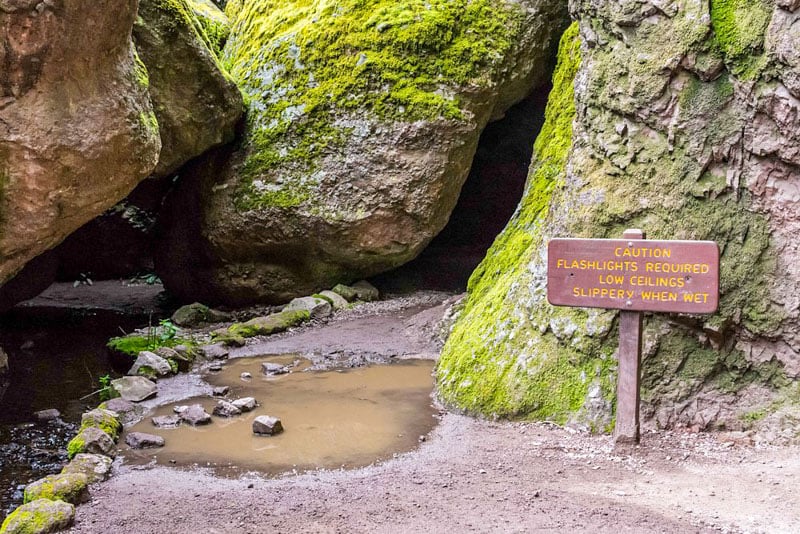
Balconies Cave
Over on the west side, Balconies Cave is typically quieter and feels a bit more adventurous. You’ll do more scrambling here, but the approach trail gives you some of the best views in the park.
Winter can get interesting. Sometimes the caves flood, turning them into a whole different experience. If that’s not your thing, stick to the drier months. But if you’re up for it, visiting in winter means you might catch some amazing light beams cutting through the cave entrances.
My best tip? Get to either cave early. They get busy by mid-morning, and trust me, they’re more fun when you’re not in a line of people. And while you don’t need to be a pro hiker, watch your step – those rocks can be sharp.
Remember, if the caves are closed (which happens), don’t sweat it. The trails to reach them are worth the trip alone.

Best Hiking Trails in Pinnacles National Park
After exploring many of the hiking trails in Pinnacles National Park multiple times, I can tell you this: the hiking here packs a punch for such a small park. The trails climb quickly and the views come fast. Just be ready for some serious elevation gain!
Condor Gulch to High Peaks Loop
This is the crown jewel of Pinnacles, taking you through the heart of an ancient volcano split apart by the San Andreas Fault. Starting from Bear Gulch parking lot, I recommend tackling the steeper Condor Gulch side first (your knees will thank you). You’ll climb through a maze of spires with carved steps and handrails in the famous “steep and narrow” section.
Spring brings wildflowers and perfect temperatures. Summer is brutal here, and fall can be dry, but winter can be surprisingly amazing between rain storms. Keep your eyes up around mid-morning for soaring condors.
- Distance: 5.4 miles loop
- Elevation gain: 1,600 feet
- Difficulty: Challenging
- Time needed: 3-4 hours
Moses Spring and Rim Trail Loop
Perfect for getting a taste of everything that makes Pinnacles special without committing to a longer trek. This loop gives you it all: towering rock formations, the famous talus caves, and Bear Gulch Reservoir. It’s my go-to recommendation for first-time visitors and families.
The variety keeps things interesting. One minute you’re exploring dark cave passages, the next you’re gazing across the valley at dramatic spires. If Bear Gulch Cave is closed, don’t worry, the trail’s other features make it worth your time.
- Distance: 2 miles loop
- Elevation gain: 500 feet
- Difficulty: Moderate
- Time needed: 1 hour
Old Pinnacles Trail to Balconies
This is my favorite “get away from the crowds” trail. Starting from the quieter west side, this fun route leads to the impressive Balconies Cave and some of the park’s most dramatic views.
My tip? Take it clockwise. Scrambling up through the cave is way more fun than going down, and you’ll be rewarded with incredible vistas on your return loop.
The trail itself is pretty mellow, but the cave scrambling adds just enough excitement to make it memorable. Sure, they say bring a flashlight, but I’ve done it with just my phone light (though a real headlamp is better!).
- Distance: 4.3 miles loop
- Elevation gain: 700 feet
- Difficulty: Moderate
- Time needed: 2 hours
Things to Do in Pinnacles National Park (Beyond the Hiking Trails!)
While most visitors to California’s national parks stick to hiking trails, Pinnacles offers so much more. If you’re exploring things to do in California, trust me, some of these activities might become the highlight of your trip.
Rock Climbing
Pinnacles is a climber’s paradise with over 200 established routes. The volcanic breccia here creates unique climbing you won’t find anywhere else in California.
If you’re a first time climber, I recommend booking with one of these authorized guides:
- Adventure Out (runs beginner classes most weekends)
- Pinnacles Adventure (specializes in private instruction)
For experienced climbers:
- Discovery Wall: 5.6 to 5.10a routes, morning shade, perfect for warming up
- Tourist Trap: 5.8 to 5.11b, afternoon shade, best views in the park
- Monolith: 5.7 to 5.12b, all-day sun, bring plenty of water Best seasons for climbing are fall and winter when the rock is grippy and temperatures are perfect.
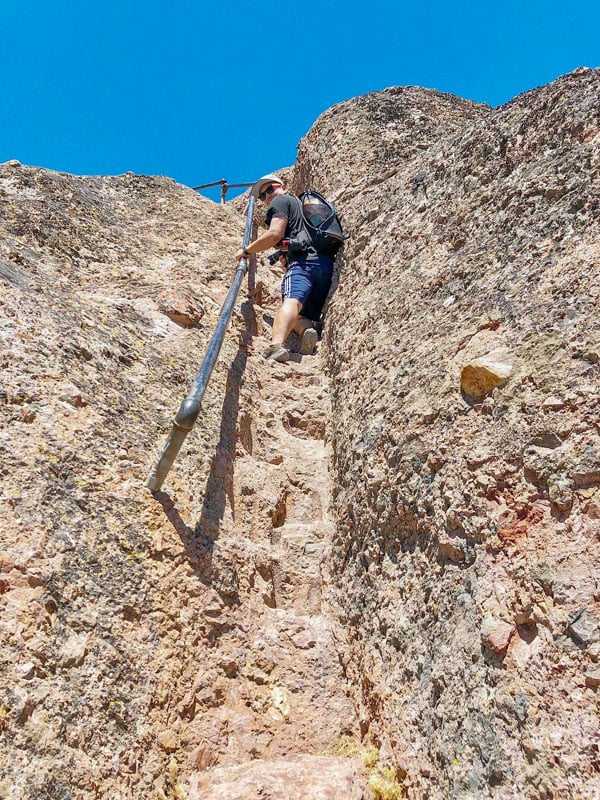
Condor Watching
Getting to see endangered California condors is all about timing and location. These massive birds (9-foot wingspan!) have favorite spots:
- High Peaks Trail: Best viewing 10 AM – 2 PM when thermals are strongest
- Scout Peak: Morning hours, especially near the bench
- Hawkins Peak: Late afternoon when they return to roost
Bring binoculars and look for numbered tags on their wings. Rngers love hearing about which birds you spotted! The best months for condor watching in Pinnacles National Park are March-May and September-October when thermal conditions are perfect for soaring.
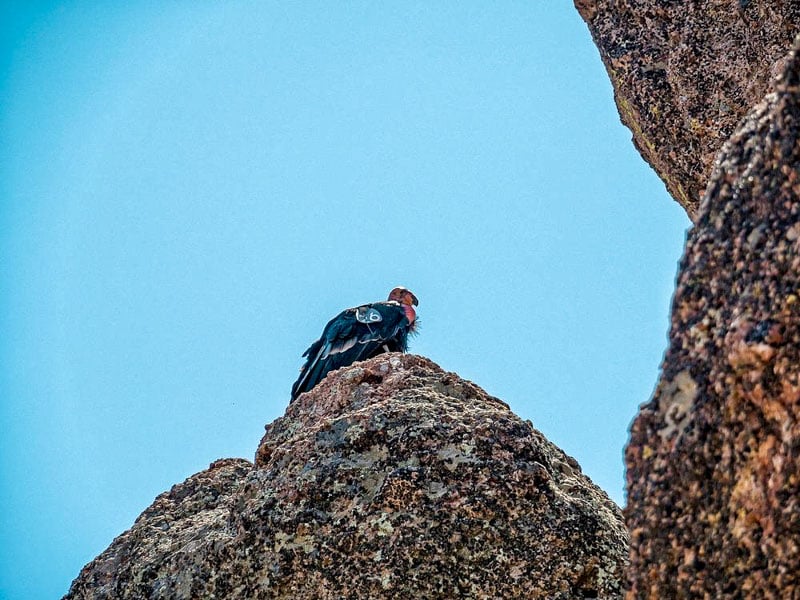
Night Sky Viewing
The east side of Pinnacles transforms completely after dark. The campground runs occasional astronomy programs, but you can stargaze on your own too. Head to the ridge behind the visitor center for spectacular views of the night sky. Just stick to the east side since the west entrance closes at night.
Wildlife Photography
Bobcats, golden eagles, and prairie falcons frequently make appearances here. Dawn and dusk offer your best chances for amazing photos. The Bench Trail, quiet and flat, has given me some of my best wildlife encounters.
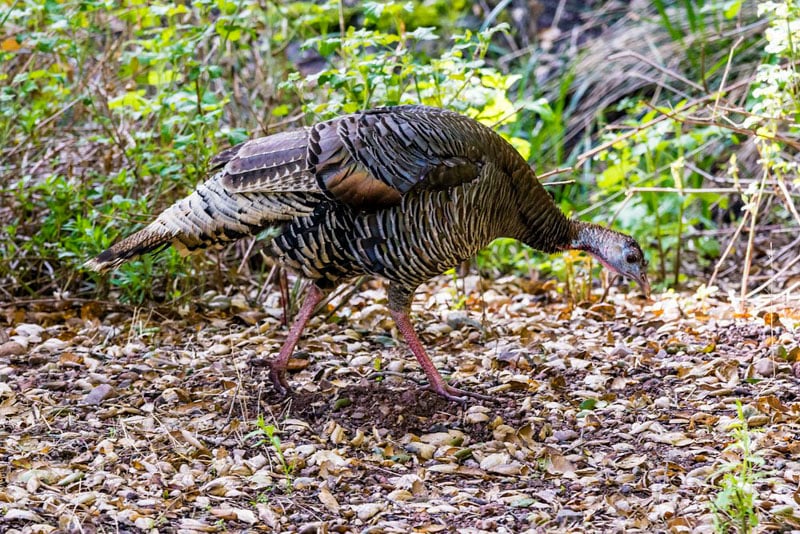
Wildflower Hunting
Visit Pinnacles National Park between March and May to catch the spring wildflower show. The west side usually has the best blooms. Juniper Canyon Trail showcases an incredible variety; it’s perfect for flower enthusiasts and photographers.
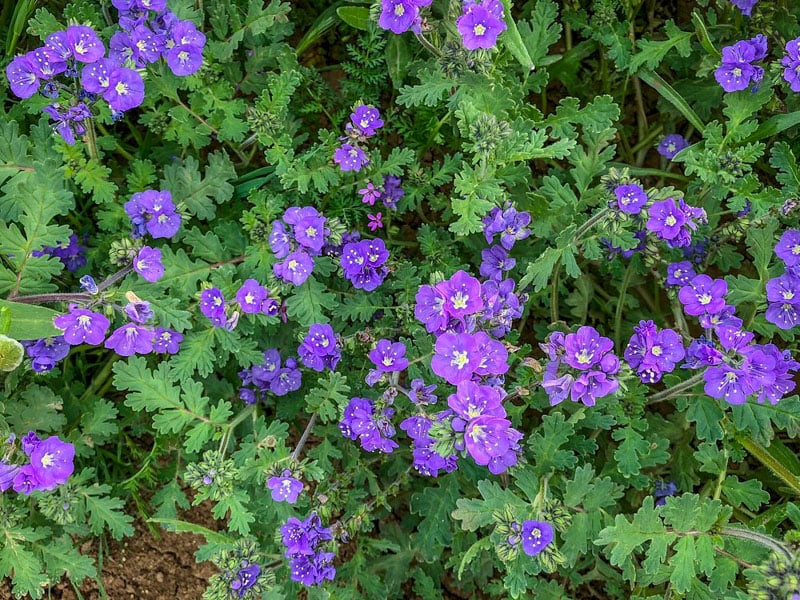
Best Time to Visit Pinnacles National Park: Season-by-Season Guide
Let me help you plan the perfect visit. I’ve been here in every season, and each offers something unique.
Spring (March to May)
This is the most popular time to visit Pinnacles National Park. Expect:
- Temperatures: Perfect 60-75°F days
- Wildflowers: Peak bloom mid-March to early April
- Crowds: Heaviest of the year, especially weekends
- Cave conditions: Usually flowing with water
- Must-book: Campground (3+ months ahead)
- Best activity: All-day hiking and cave exploring
Summer (June to September)
Summer requires strategy, but can be incredible:
- Temperatures: 90-100°F+ by noon (it gets very hot!)
- Best hours: 5:30 AM – 11 AM, then 6 PM – sunset
- Crowds: Light, especially midday
- Cave conditions: Perfect refuge (steady 65°F)
- Must-do: High Peaks at sunrise, caves at midday
- Best activity: Early morning climbing, midday cave exploring
Fall (October to November)
My personal favorite season to visit Pinnacles:
- Temperatures: Mild 70-85°F days
- Colors: Golden oak woodlands by late October
- Crowds: Light to moderate
- Cave conditions: Usually dry, perfect exploring
- Best activity: Rock climbing and longer hikes
- Bonus: Peak condor activity as they ride thermals
Winter (December to February)
The park’s most dramatic season:
- Temperatures: 50-65°F, chilly mornings
- Special features: Morning fog, occasional snow on peaks
- Crowds: Very light
- Cave conditions: Can be wet or closed after rain
- Best activity: Photography and wildlife watching
- Bonus: Clearest views of the year
No matter the season, I recommend following this daily pattern:
- Dawn to 10 AM: Main hiking
- 10 AM – 4 PM: Caves, visitor center, or shorter trails
- 4 PM to sunset: Wildlife watching and photography
Camping and Lodging Options Near Pinnacles National Park
Want to know the best spot to watch condors soar past your tent at sunrise? Knowing where to stay in Pinnacles can make or break your visit.
Camping Inside the Park
The east side campground is a gem on the West Coast. It’s the only one in the park and honestly, it’s one of the best spots to really experience Pinnacles.
The amenities are solid: you’ve got hot showers (bring quarters), a swimming pool that’s open April through September, and a store for basic supplies and ice. Most sites have electric hookups, and the oak trees provide welcome shade in summer.
Book way ahead for spring weekends, I’m talking 3 to 6 months. But here’s a secret: winter camping here is incredible. Clear, starry nights, morning fog rolling through the spires, and you can usually grab a spot last minute.
The campground stays surprisingly cozy even in winter, and it’s a perfect basecamp for exploring California’s national parks in the off-season.
Nearby Hotels and Lodging
Nothing beats camping in Pinnacles National Park, but if you need a proper bed, you’ve got options. In Soledad, just 30 minutes from the west entrance, the Inn at the Pinnacles offers the closest nice rooms with amazing views.
Over in Hollister, about 30 minutes from the east entrance, you’ll find the Ridgemark Golf Club & Resort (the best “luxury” option nearby). While not as close as camping, these spots make great basecamps for weekend getaways in California.
Looking for something special? I’m obsessed with this Airbnb I found called the Ponderosa Log Cabin. Picture this: a cabin with a wraparound porch, set on 2200 acres of golden California hills and oak trees. Plus, you can hang out with the animals at their working ranch! It’s only a 10-minute drive to the east entrance of Pinnacles.
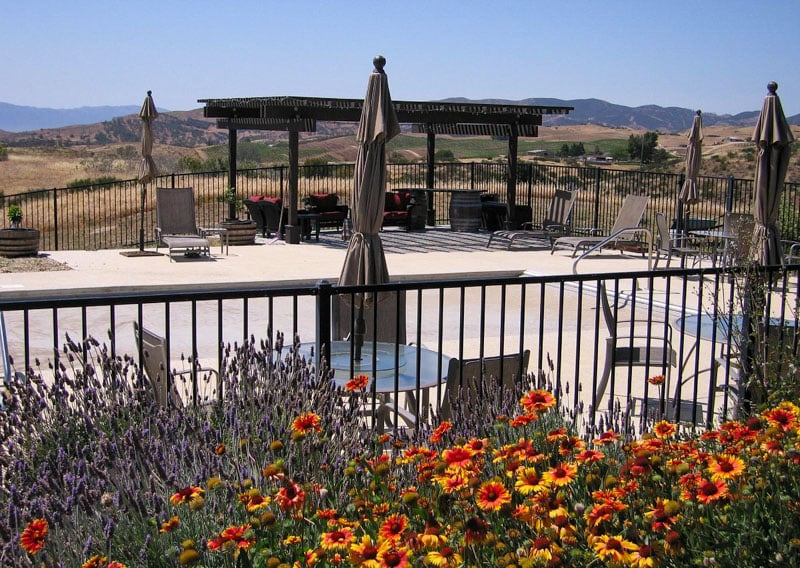
My Recommendations
If you’re camping in Pinnacles, try to snag spots 65 through 72 for the best sunrise views. The tent-only sites (1 through 31) are more sheltered from wind.
Winter campers should bring layers, mornings can dip into the 40s. Skip the expensive firewood at the campground store and grab some in Hollister instead. And while there’s no camping at the west entrance, it’s worth driving over for sunrise photos.
Staying near the park means early starts and late finishes. Just remember to book ahead during spring and fall weekends; the best spots go fast!
Tips for Visiting Pinnacles National Park
After exploring so many beautiful places in California, I can tell you that getting the most out of Pinnacles comes down to timing and local knowledge. Here’s everything you need to know to make your visit to one of the best national parks in the US unforgettable!
Getting the Most Out of Your Visit
The park’s visitor center is worth your time. I usually skip these, but here they’ll give you current condor locations and cave conditions. Plus, their water bottle filling station is filtered and cold. Trust me, you’ll want that in summer!
Photography Tips
Golden hour here is genuinely golden. The rock spires light up like they’re on fire around sunrise and sunset. If you’re shooting the caves, grab shots near the entrances where natural light meets darkness. For wildlife, the Bench Trail at dawn is your best bet for catching bobcats and eagles.
Overnight Strategy
The campground fills up months ahead for spring weekends, but here’s a secret: winter camping is seriously underrated. Clear nights, empty campsites, and the morning fog rolling through the spires makes for an incredible experience. Plus, you’ll have first dibs on the trails.
Making the Most of Summer Visits
Summer here is hot, but you can still have a great time if you plan smart. I recommend starting with High Peaks first thing in the morning, then hit the caves when the heat peaks. By afternoon, head to the visitor center or relax in the oak woodlands. The wildlife is most active at dawn and dusk anyway.
What You’ll Actually Need
Skip the fancy hiking gear. Instead, focus on sun protection and water capacity. A wide-brim hat beats a baseball cap, and I always pack electrolyte tablets. The one specialty item worth bringing? A good headlamp for the caves. And download your maps beforehand; cell service is spotty at best.
Hidden Spots Worth Finding
The Moses Spring Trail has some gorgeous pools that most people miss. There’s also a perfect lunch spot just off the Bench Trail with a view of the spires. Ask the rangers about recent condor activity. Sometimes these birds hang out in surprisingly accessible spots that aren’t obvious to visitors.
Frequently Asked Questions (FAQs) about Pinnacles National Park
I get these questions all the time about Pinnacles, and honestly, they’re exactly what I wondered about before my first visit. Let me clear up some common curiosities about this hidden gem of a park, one of the truly unique places in the US.
What is so special about Pinnacles National Park?
What makes Pinnacles National Park special is its unique volcanic landscape. It’s California’s youngest national park, featuring towering spires and rare talus caves. If you’re visiting California, the park is also one of the few places in the world where you can spot endangered California condors in their natural habitat.
Are there grizzly bears in Pinnacles National Park?
While many national parks in California have bears, Pinnacles isn’t one of them. You won’t find grizzlies here, and even black bears are super rare visitors. Instead, you’ve got a better chance of spotting endangered condors, elusive bobcats, or if you’re really lucky, a mountain lion at dawn or dusk.
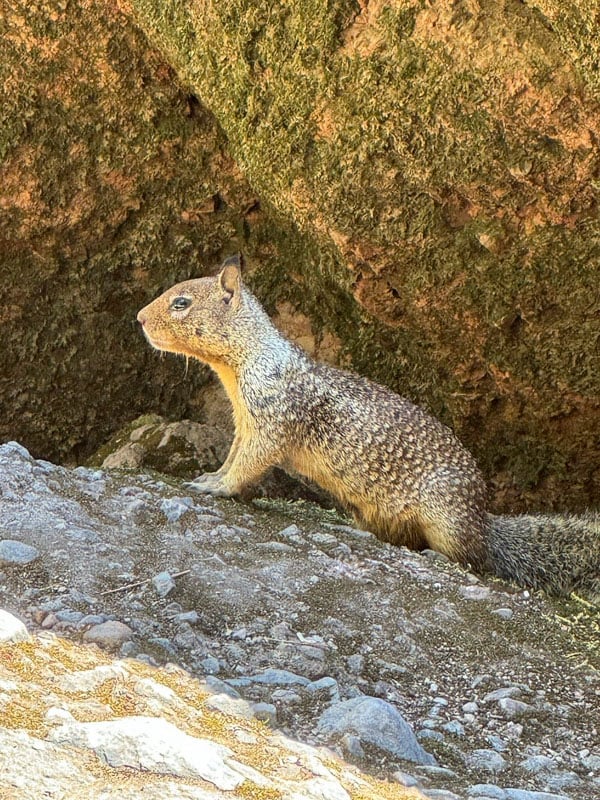
What month is best to visit Pinnacles National Park?
March and April are hands down the best months to visit Pinnacles National Park. You’ll hit the sweet spot: wildflowers carpeting the valleys, perfect hiking temperatures around 70°F, and super active wildlife. However, any month can be amazing if you time your day right. Just avoid hiking between 11 AM and 4 PM in July and August unless you love 100°F+ heat!
Is Pinnacles the smallest national park?
Pinnacles National Park isn’t the smallest national park in the U.S. While it’s compact at 26,686 acres, Hot Springs National Park in Arkansas takes that title. Pinnacles’ smaller size works in its favor though, making it perfect for day trips and weekend adventures.
